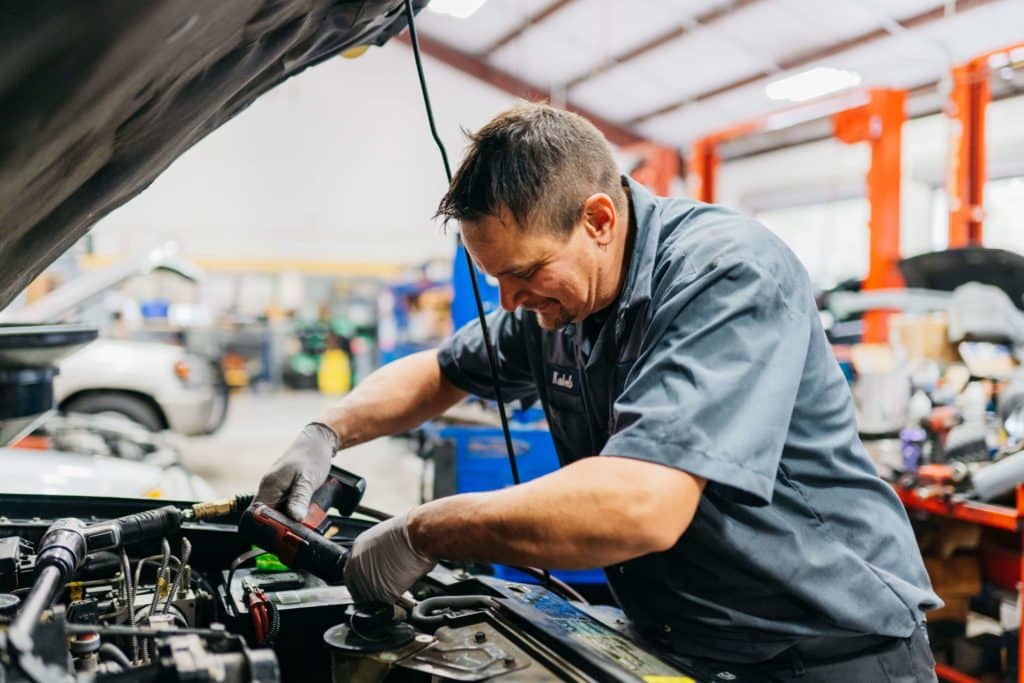All Categories
Featured

In today's vehicles, electrical systems are indispensable to almost every element of the driving experience. From powering lights and infotainment systems to regulating advanced motorist help technologies, electrical issues can considerably impact vehicle performance.
- Using OBD-II Scanners for Initial Medical Diagnosis. When detecting electric problems is the OBD-II (On-Board Diagnostics) scanner, one of the very first devices professionals make use of. This tool attaches to a vehicle's computer system via a common analysis port. It obtains and reads difficulty codes created by the lorry's onboard computer, which keeps track of several electrical components like the generator, sensing units, and electrical wiring.
These diagnostic trouble codes (DTCs) give a clear indication of where the electric trouble may be. A code indicating a faulty sensor can aid technicians focus on details elements, such as the oxygen sensor or wheel speed sensing units, without having to check the whole lorry. This tool accelerate the medical diagnosis and aids professionals pinpoint the concern better.
- Visual Inspections for Obvious Issues. After scanning for codes, a technician will carry out a visual inspection of the car's electric parts. Specialists look for loose links, frayed wires, and any indications of deterioration, as these are typical perpetrators of electric malfunctions.
Relays and fuses are also examined since a blown fuse can stop a system from functioning effectively. It's typically a sign of an underlying electrical concern that requires more examination. if a fuse is found to be blown.
- Battery and Charging System Tests. The battery and billing system are main to the lorry's electric performance, and failings in these areas can bring about a range of problems. Vehicle repair shops will certainly execute certain tests to ensure the battery is billed and the generator is functioning properly. Technicians utilize a multimeter to measure the battery's voltage. A fully billed battery must review around 12.6 volts when the cars and truck is off, and it needs to remain around 13.7 to 14.7 volts when the engine is running, suggesting the alternator is billing the battery.
If the battery or generator is malfunctioning, it can create electric failings in other systems. As an example, a failing generator might not supply adequate power to the engine control components, causing irregular habits or stalling. Technicians will certainly change or fix the generator or battery as needed.
- Circuit Testing for Power Flow Concerns. Electrical troubles in automobiles frequently come from issues within the circuits that power different parts. Circuit testing assists professionals identify whether electric signals are being transmitted appropriately with circuitry and ports. Specialized devices like a test light or voltmeter are used to inspect for power circulation with different circuits. These examinations assist specialists recognize where a circuit may be shorted, open, or damaged.
As an example, if the headlights are malfunctioning, professionals can check the circuit providing power to the headlights and map the problem back to a defective cable, a poor connection, or a malfunctioning button. This technique permits even more accurate diagnosis and fixing.
- Checking for Software Application or Control Component Issues. Modern lorries count greatly on software application and control components to manage different electrical systems, including engine monitoring, security attributes, and infomercial systems. It might be associated to software application or firmware insects if there's a problem with a specific system. Auto service center usually have the ability to check for and solve software-related issues.

Utilizing manufacturer-specific analysis devices, technicians can examine for software updates, execute resets, or reprogram control modules to fix the concern. If a car's flexible cruise control system isn't working, it could be due to a software application glitch that requires an update instead than an equipment failure.
- Advanced Testing for Hybrid and Electric Autos. For hybrid and electric cars, electrical diagnostics need specialized devices because of the intricacy of their high-voltage systems. These vehicles are outfitted with effective battery systems and electric drive motors, and repairing these components needs high-level experience. Service technicians make use of specific tools to securely evaluate the high-voltage battery, inverter, and electrical motors. These devices can examine the battery's state of fee, voltage degrees, and capability.
Additionally, hybrid and electrical vehicles typically have unique problems associated to power regeneration systems, billing components, or the interaction in between the electrical motor and internal combustion engine. Service technicians learnt crossbreed and electrical automobile systems utilize advanced analysis devices to address these issues.
Verdict. Diagnosing electrical problems in contemporary cars is a multi-step procedure that needs a combination of state-of-the-art diagnostic devices, hands-on assessments, and specialized understanding. By using OBD-II scanners, carrying out aesthetic inspections, testing batteries, and running innovative diagnostics, service technicians make certain that electric issues are identified and dealt with, enabling your automobile to run smoothly and safely.
Latest Posts
Quick and Hassle-Free Shower Room Upgrades
Published Apr 20, 25
1 min read
Expert Auto Services at Montclare Auto Repair - Explore Now
Published Apr 19, 25
2 min read
Safeguard Your Future with WyHy's Unique Certificate Options
Published Apr 19, 25
1 min read